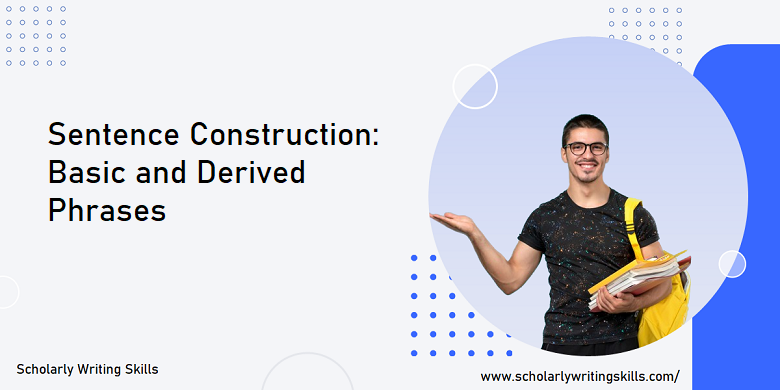Academic writing has been dependent on grammar for ages. The indispensability of grammar for this type of writing has gone high on account of certain demands of the present age. Academic writing is a composite skill which is employed to achieve fundamental academic aims such as knowledge sharing and advancement. For this purpose, writers require to use formal and objective language for logical interactions in texts. It is grammar that sustains academic writing in functioning with various features. These features include meaning rich sentences, conciseness, liveliness, information packaging, information flow and synthesis, formality, objectivity and readability, etc. This post keeps its focus on these features.
1. Meaning Rich Sentences
In academic writing tasks, the writers have to express complex concepts. Such concepts cannot be presented with only unconnected simple sentences. Here grammar helps writers in constructing meaning rich constructions out of simple sentences. Such constructions can help the writers to compose sentences that can attract the readers. Further, this type of sentences help the readers understand the text easily. This sort of sentences can be constructed by combining simple sentences with coordinating conjunctions, subordinating conjunctions, and participles. For example:
- Saeed deserted his parents. He departed to London
- Saeed deserted his parents and (he) departed to London.
- After Saeed had deserted his parents, he departed to London.
- Having Deserted his parents, Saeed departed to London.
Simple sentences can be combined by turning verbs into nouns and nouns into verbs.
- People pay money at shopping malls. They use credit cards.
- Payment of money at shopping malls is made through credit cards.
Examples in (i) show how simple sentences can be combined with the help of coordinating conjunctions, subordinating conjunctions, and participles (… + ing). Next, the example in (ii) indicates how verbs are turned into nouns for sentence combining.
2. Conciseness in Expressions
Conciseness means expressing ideas with fewer words. This is ensured in academic writing for saving readers’ time and addressing the imposed word limit.
Numerous novice writers particularly at universities require to write research articles, etc., for publishing in journals. On the other hand, the editors impose word limit owing to the dearth of space in the issues of journals. Thus, writing concisely becomes a constraint for the academic writers. Here grammar comes to their help in reducing the length of the different sections of their documents. Thus, the writers can write concisely without sacrificing the meanings in their texts. A number of ways of reducing length along with examples are given below:
One way to write concisely is to avoid unnecessary information. For this, the writers need to notice and remove redundant words which are frequently found as alone or a part of a phrase
- Removable Words of a Phrase
- We purchased arms in order to defend ourselves.
- We purchased arms to defend ourselves.
- Removable Prepositions
- The people in the border area are in trouble.
- The border area people are in trouble.
- Turning Prepositional or Phrasal Verbs into Ordinary Verbs
- Our request was turned down.
- Our request was rejected.
- Turning adverb phrases into single adverbs
- This task can be completed with ease.
- This task can be completed easily.
- Turning Wh-Clefts into Simple Nouns
- What data indicate is that employees work efficiently.
- Data indication is that employees work efficiently.
- Turning of a Question Word + Can or Should into Question Word + Infinitive
- They said to the boss, “When can we leave?”
- They asked the boss when to leave.
From the examples given above, it becomes clear how words in constructions can be reduced to minimum for the sake of conciseness.
3. Liveliness of Texts
In a text, words, phrases, sentences may go repeated. At times, these repeated units are useful in connection with the meaningfulness of a given text. However, such units are frequently an undue burden on the liveliness and communicative capability of the texts. For the removal of this cumbersome load from texts, various resources of grammar can be helpful. For example, we can use alternative words, phrases, or clauses by befitting them in the respective grammatical context. In other words, we can replace repetitive units with alternative units that have same grammatical properties. For example:
- One commentator claims that early success in cricket leads to success, while the other claims that consistent performance is more crucial.
In the above example, the word claimshas been usedin the both parts of the sentence. The word evaluates i.e., synonym of claims can be used in the second part to remove the repetition. But this substitution is not that much simple. When the word evaluates is used, it has to be befitted in the grammatical context of the sentence. The writer can write in this way:
- One commentator claims that early success in cricket leads to success, while the other evaluates the means of success saying consistent performance is more crucial.
4. Packaging Information for Fluency
The writers require to package information in sentences in a way that information flows from one sentence to another smoothly. For this the writers need to order sentences in such a way that the readers can notice how one idea is connected to another. Writers can use a single noun or a phrase or a clause as the subject of a sentence. This can help them put the information of the previous sentence as a known information in the new sentence. They can particularly use either a subordinate clause first or the subordinate clause as the subject of a sentence. This they need to do when they require to place information in their sentences in a known and new information sequence. For example:
- Nabeel stole money from a house and tried to leave the area. However, he was stopped at a police check post. When the police inquired him about his destination, he could not give a clear answer and his face went colorless. That he was lying was obvious from his face.
The writer in the example (a) positions the subordinate clause “When the police inquired him about his destination” first and the main clause “he could not give a clear answer and his face went colorless” later. Further the subject of the last sentence “That he was lying”is subordinate clause in itself. Thus, the writer has ordered his sentences to make smooth flow of the information possible.
5. Synthesizing Information Collected from other Sources
Writers need to collect knowledge from various sources and organize it, either to generate new knowledge or new questions. In this activity, if they do not seek help from grammatical skills for paraphrasing, they copy materials from other sources. One result of this action is that they remain unable to understand ideas propounded by other writers. The other is that they incur the accusation of plagiarism. If in any way they evade the charge of plagiarism, their texts go repetitious and boring for the readers. For composing their academic texts efficaciously, the writers can get support from grammar. The grammar support provides them with linguistic guidance in the form of paraphrasing skills that enable them write originally, concisely, and variably. Instead of depending upon synonyms, the writers should employ certain grammatical resources for paraphrasing. These resources include exchanging a word class with another, reordering sentences, turning clauses into phrases, etc. An example is given below in which an adjective has been changed into a noun.
- Naveed’s fame as a researcher has always been high.
- The height of Naveed’s fame as a researcher has always been there.
6. Conveying a Message Indirectly
The scholarly writers not only take care of their audience in terms of communication but also save the face of their audience. Further, they avoid appearing categorical and personal. This they do for bringing their readers to a particular frame of mind with which they easily align with the ideas presented to them. For this, the writers use various grammatical resources, i.e., passive voice, modal verbs, indirect evaluations, negative questions, etc. In addition, the writers avoid the use of personal pronouns like ‘I’, ‘we’ and ‘you’ so that they may not appear personal.
7. Sequencing in Text
In addition to words, the writers may at places need to repeat statements for the purpose of advising or clarifying. At times, the writer needs draw reader’s attention to the points presented in the foregoing sections of the text. For this they use expressions like as presented above. This is done to make the reader understand the point in focus by connecting it to the one presented before. Sometimes, writers present a point and considering it beyond the understanding level of the reader, elaborate it with different wording. However, the writers mark this repetition through expressions like ‘in other words’, ‘putting it in another way’, etc. It means, the writers should have knowledge of alternatives in grammar whether they are of word level or higher.
In this post, role of grammar features in academic writing has been highlighted briefly. In the coming posts, all these leverages of grammar will be further detailed and illustrated with suitable examples.


